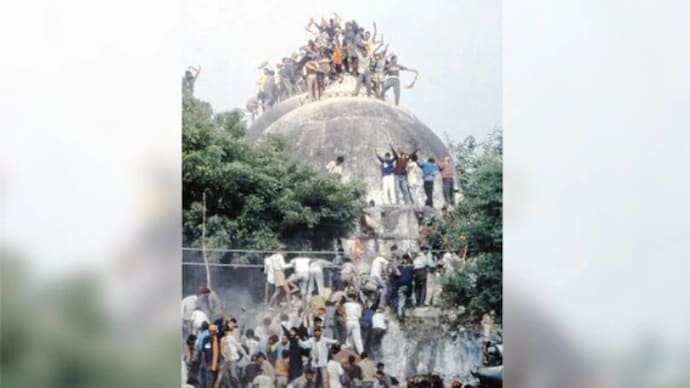Babri Masjid demolition: December 6, 1992, a day that lives in infamy
"If there were no implements, the frenzied hordes would have used their bare hands to the same effect, so powerful was the poison that coursed through their veins in those few hours of madness."

In Short
- Ayodhya's Babri Masjid was razed 26 years ago today
- Title suit now pending in Supreme Court
- Hindu outfits have demanded an ordinance to facilitate temple construction
It happened on a Sunday. The scenes would return "like deranged ghosts", said an India Today report, "to haunt those of us who were at the graveside to witness the burial of a secular dream". Twenty-six years later, many still think of the site where the Babri Masjid stood in Ayodhya and say: "Mandir wahin banayenge."
"Wahin" was "yahin" on that day: December 6, 1992.
Screams of, "We'll build the temple at this very spot," were heard at around 11 am as kar sevaks breached barricades. India Today's report records what a police superintendent told reporters a little more than an hour later: "It is all under control. Go and relax, you are only wasting your time."
The events of the next few hours live in infamy. Shortly after noon, the Babri Masjid's three domes had been "submerged" by kar sevaks. Journalists were attacked. One by one, the domes crumbled.
The screams of exultation with each blow of a pickaxe, each thrust of a rod, each dome that came crashing down. If there were no implements, the frenzied hordes would have used their bare hands to the same effect, so powerful was the poison that coursed through their veins in those few hours of madness.

The mosque sat on a site believed by millions of Hindus to be the birthplace, or "janmabhoomi" of Lord Ram, the hero of the epic Ramayan.
Over 1.5 lakh people were involved in the Babri Masjid's demolition. The kar sevaks had converged as part of a movement by BJP and Hindu outfits for a Ram temple at the disputed site.
Around 2,000 people were killed across India in riots that followed the demolition.
In 2010, the Allahabad High Court divided the disputed land into three parts -- one each for the Sunni Waqf Board, the Nirmohi Akhada and the Ram Lalla.
The Ram Janmbhoomi-Babri Masjid title suit is now pending in the Supreme Court, which will decide the schedule of hearing in January. Several appeals have been filed against the high court's judgment.
After the Supreme Court refused an early hearing, Hindu outfits have demanded that the government bring in an ordinance to facilitate the construction of a Ram temple at the site in Ayodhya.

India's memories of the events of December 6, 1992, are unlikely to fade anytime soon, if ever. "Even at the dawn of that Barbaric Sunday, few among the moderates or even the large media contingent believed that before sundown, and in the space of a few hours, the triple domes that loomed so securely on the horizon would be razed to the ground," the India Today report said.
But by 4.49 pm, a "red cloud of dust" settled on the rubble -- all that remained, the report said, of two things: The mosque, and the "the myth of Hindu tolerance".
Inputs from PTI
